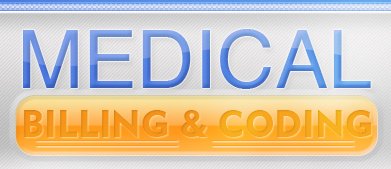Human Anatomy and Physiology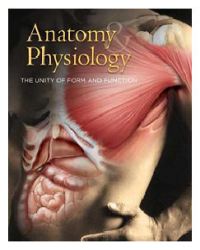
Human anatomy and physiology is the study of two disciplines rolled into one. The first discipline is anatomy and the second is physiology. Human anatomy is the study of body structure and organization. Anatomy can also be further broken down into either gross anatomy or microanatomy. Gross anatomy refers to the study and disection of the human body without the aid of a microscope or magnifying lens. Microscopic anatomy refers to the study of human tissues and cells utilizing a magnifying lens or microscope. Physiology is the study of how the body functions and the functions of it's parts. This includes the observation of the human body, experiments conducted on the body, and/or the use of special equipment or materials. The study of the human body at a cellular and chemical level are particularly of interest here. Learning Human Anatomy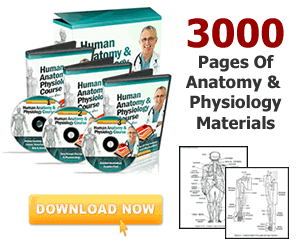
It's not easy to learn human anatomy. We've located a home study course that's custom made to help you learn anatomy by using visual material that's really helpful. With over 3,000 pages (wow) of physiology and anatomy materials, this guide has proven to be a great aide for anatomy students to help them learn this material and pass their exams. It contains:
Human Anatomy & Physiology CourseA&P IntroductionWhen studying human anatomy and physiology you will be viewing the human body on six different levels: Organism Level: This is the highest level of organization. This level looks at the human body as a whole and includes all other levels with in it. Organ System Level: This level breaks down the human body into eleven functional groups called organ systems. These organ systems include: 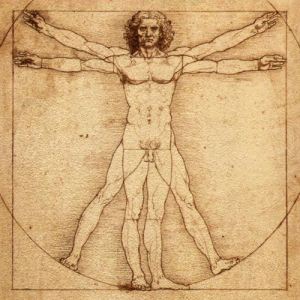
Organ Level:This level looks at the tissues that compose each organ and each organ's specific function. Tissue Level: This level looks at each tissue in the body microscopically to study the cell types of each tissue. Cellular Level: This level looks at the composition of each cell and the functions of each cell part. Chemical Level: This level looks at chemical composition, atoms and molecule, and how chemicals effect the funtions of the human body. When learning anatomy and physiology you will study each of the eleven organ systems at all six levels listed above. In addition to this you will also be introduced to a number of medical terms. It is helpful to have a prior understanding of medical terminology when starting out. Knowing locations on the body and dirrectional terms is also recomended. If learning medical terminology is not an option it is helpful to at least be familiar with the most common anatomy terms. Taking the time to learn these first may make learning human anatomy and physiology less overwhelming. Anatomy & Medical Coding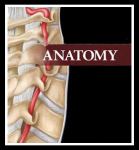 What does human anatomy and physiology have to do with medical billing and coding? When interperting a medical record the coder must be able to read the physician's dictation and understand exactly what was provided to the patient. Dictation may include medical terminology, surgical approaches, organ names, and details of a single procedure. Without a general understanding of gross anatomy a medical coder simply cannot select a correct code. At time gross anatomy cannot be understood without understanding the physiology first. And although medical billing is not directly involved, the actions of the medical coder do effect the billing processes. Example:The surgeon states he made use of a pediatric endoscope by passing it through the oropharynx, past the gastroesophageal junction, and into the stomach proper to the duodenum. He also states a biopsy was taken before retraction. If a medical coder where to look up each of the individual terms stated above in the CPT book they would be lead to the following codes: 42800 - Biopsy; Oropharynx 43600 - Biopsy of stomach; by capsual, tube, peroral (one or more specimens) 44010 - Duodenotomy; for exploration, biopsy(s), or foreign body removal **No codes found for the term gastroesophageal junction** Had the same coder known their human anatomy and physiology they would know that the oropharynx (mouth and pahrynx), the gastroesophageal junction (where the esophagus meets the stomach), the stomach proper (a section of the stomach), and the duodenum (the sphincter where the stomach and small intestine join); is one long passageway that is commonly traveled by a video camera for exploration purposes. They would also know that this passageway, when traveled in this fashion, is abbreviated E.G.D. (esophagogastroduodenoscopy). By look up the singel term esophagogastroduodenoscopy the coder would then be led to the one correct code 43239 - Upper gastrointestinal endoscopy including esophagus, stomach, and either the duodenum and/or jejunum as appropriate; with biopsy, single or multiple |
Anatomy & CodingHuman anatomy and physiology is important to medical coders for many reasons including proper ICD-9 and CPT code selection, chart and dictation interpretation, and physician interaction. Knowledge in this area will not only make you a more accurate and knowledgeable coder but may also give you a competitive edge in the job market among other coders. Medical TerminologyMedical terminology and anatomy are closely related. Usually when learning one the other is inherently learned. It is suggested that those starting out begin by learning basic medical terminology and then progress to human anatomy and physiology. ReferencesThe CPT book holds a wealth of anatomical information. In the surgery section each organ system has an anatomical illustration located in its guidelines. Each illustration depicts major organs and structures in that system. There are also many smaller diagrams depicting common procedures throughout the code book. |
|
Step-by-StepLearning medical coding can seem over whelming at times due to the large amount of information. By learning medical terminology and gross anatomy first individuals find medical coding easier to understand and are more accurate in their code selection.
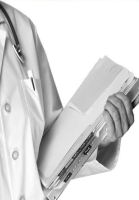
Enjoy This Site?
Then why not use the button below and add us to your favorite bookmarking service? |
||
|
| ||
